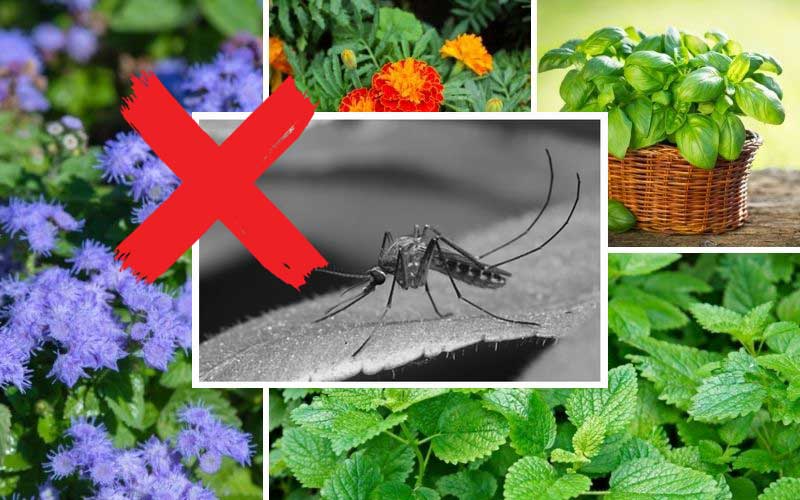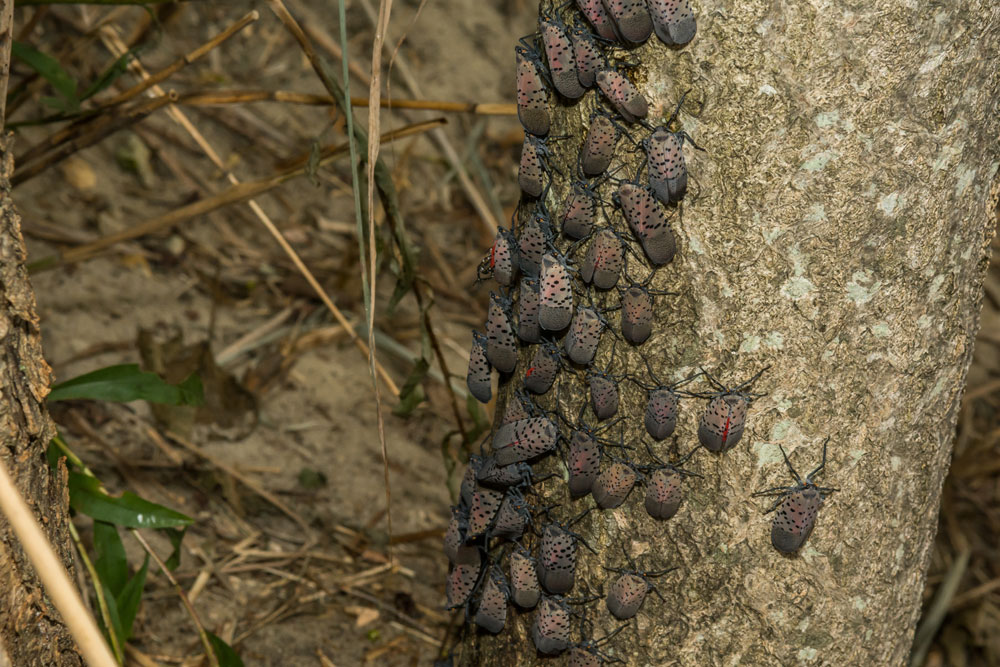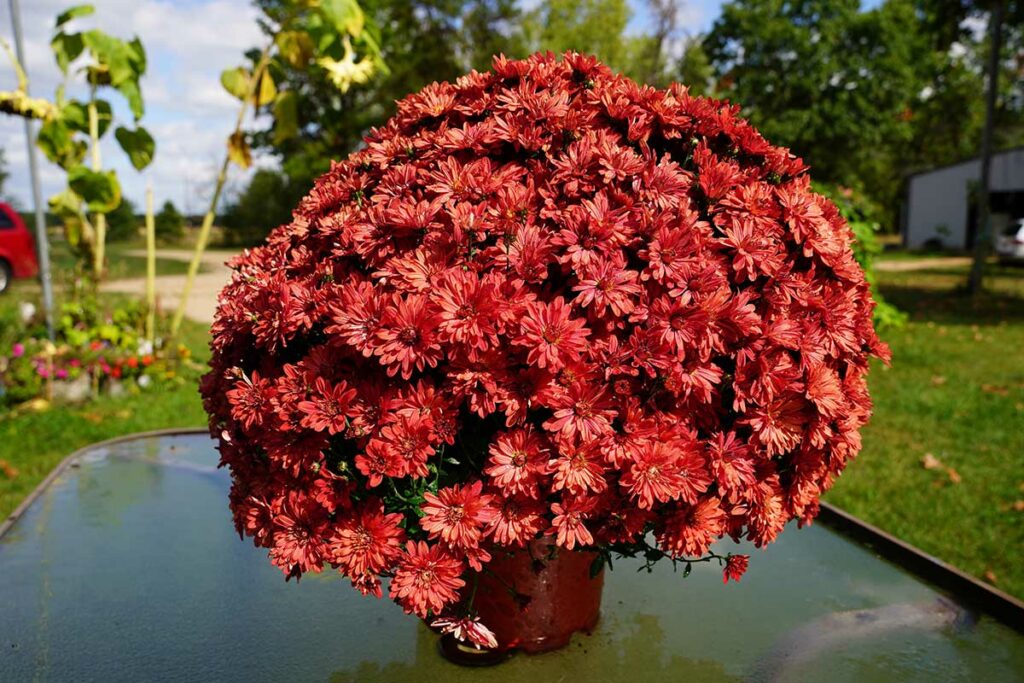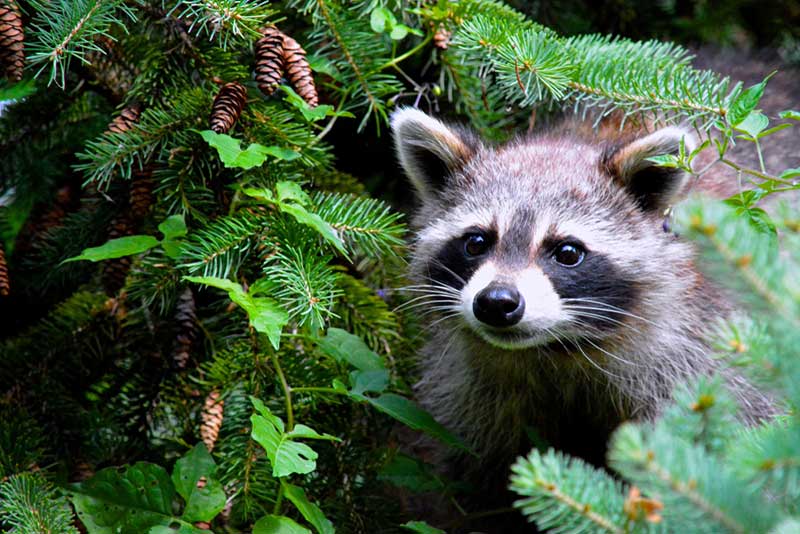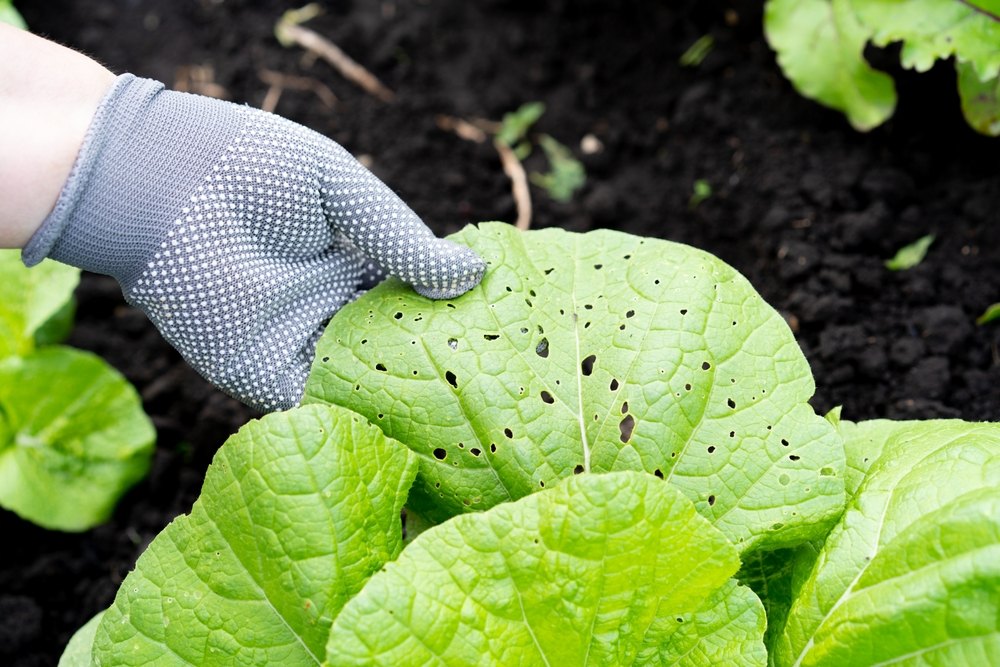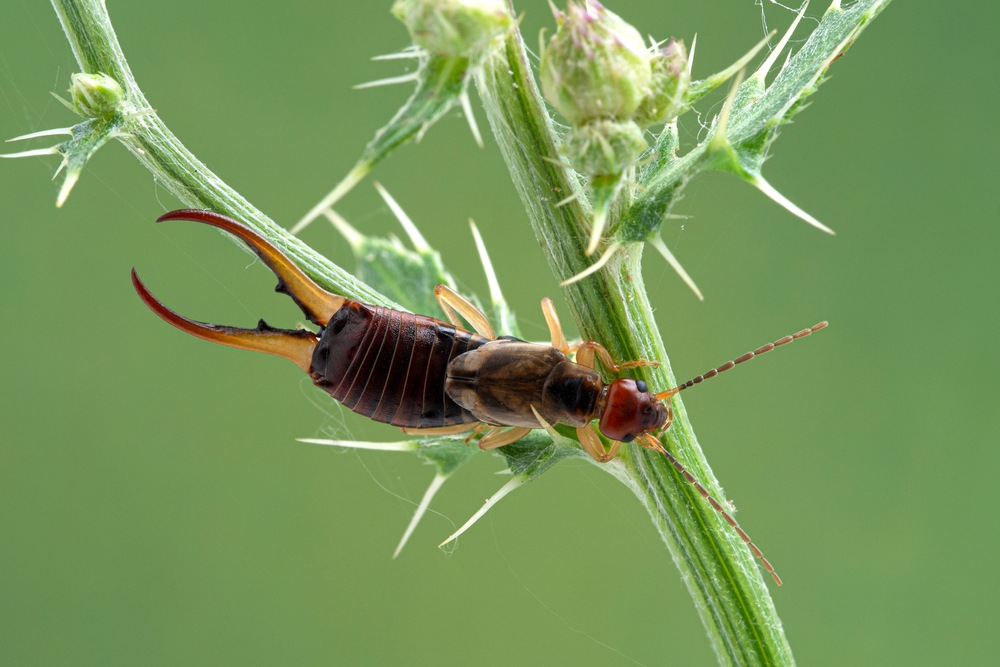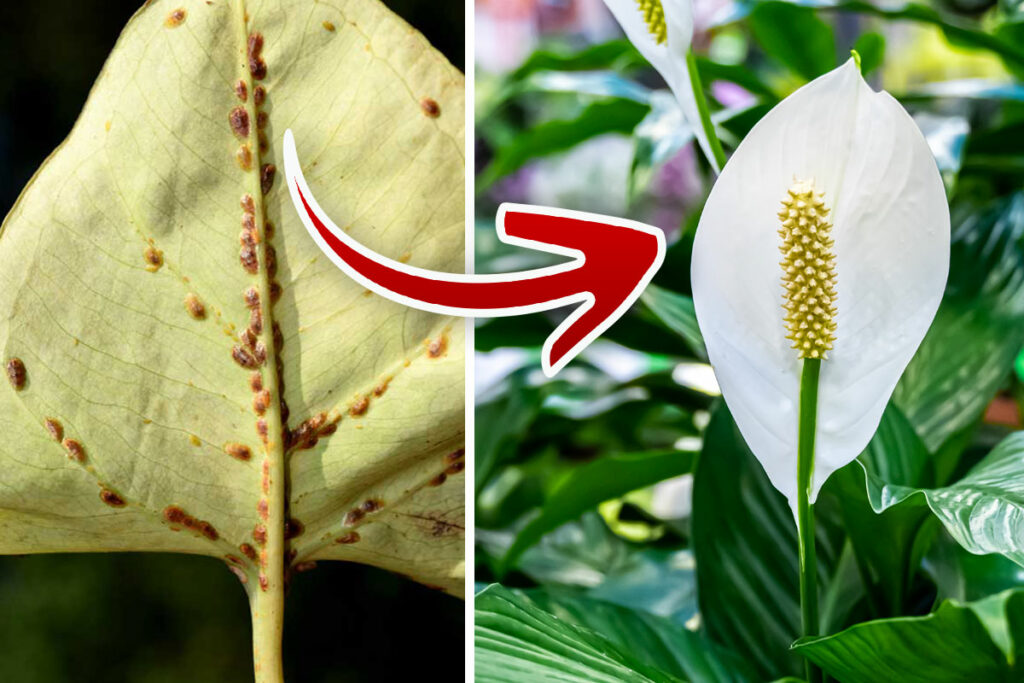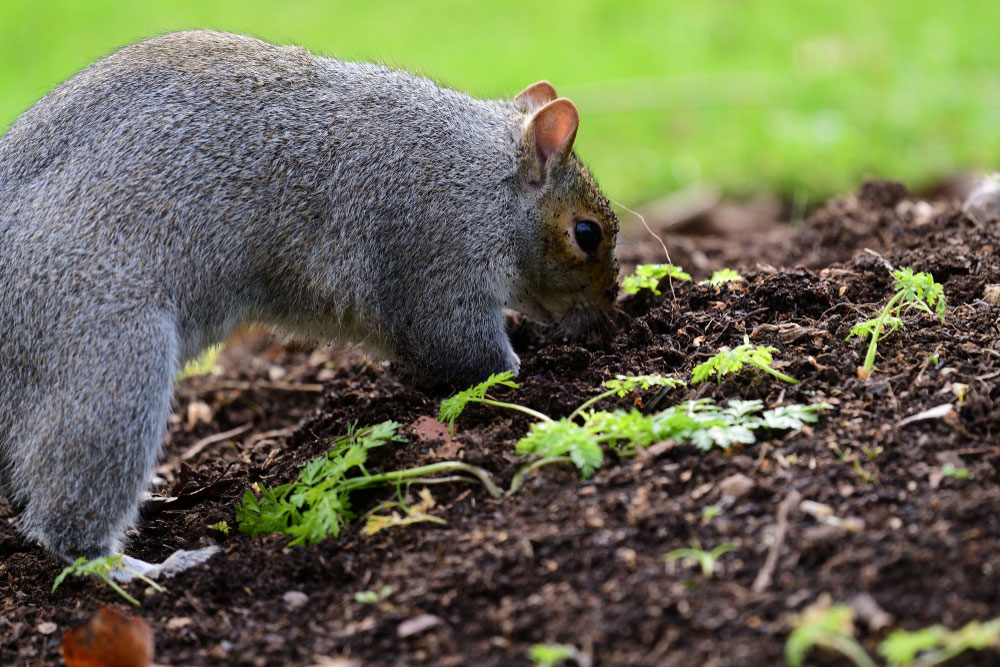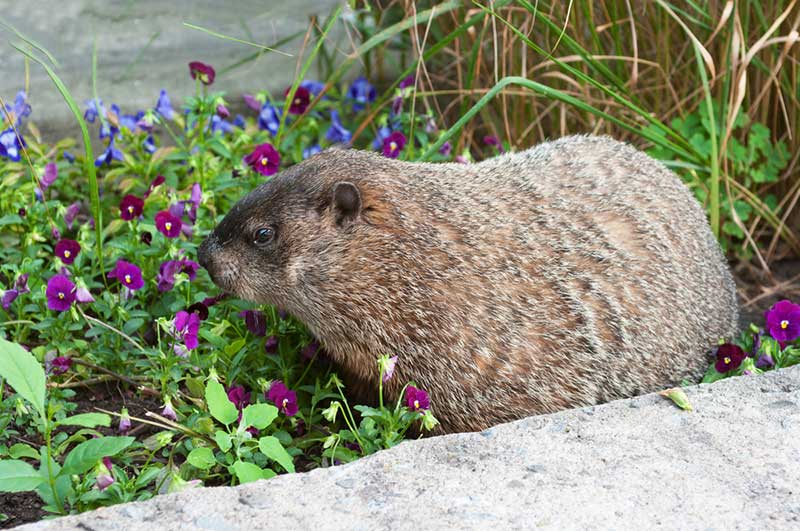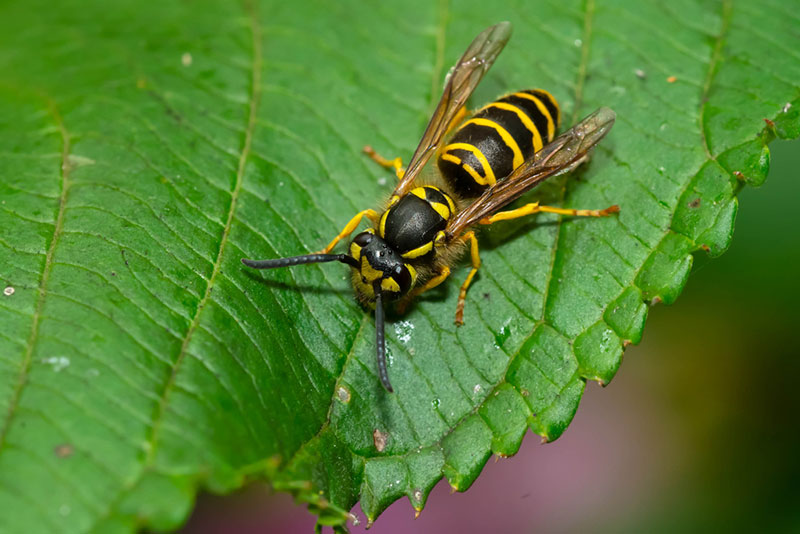
Yellow jackets are a group of social wasps in the genera Vespula and Dolichovespula. These wasps are considered beneficial insects in the garden as they feed on grubs and other harmful insects during the beginning of the season. But, yellow jackets change their feeding habits when other insects are scarce and turn to foraging for food as the summer winds down. This coincides with the time when yellow jacket populations are at their highest making them a nuisance to humans as they swarm to human food as a source. Yellow jackets may swarm picnics, hang out around trash bins and forage for bits of food and drinks left behind on the deck.
To make matters worse, yellow jackets pack a powerful sting and unlike bees that can only sting once, yellow jackets can inflict multiple stings. They also release pheromones when they attack to alert other yellow jackets to protect the nest, effectively inviting more yellow jackets to the sting fest, explains the University of Maryland Extension.
Getting rid of nuisance yellow jackets doesn’t need to be a challenge. With the proper precautions and right equipment there are several effective ways to take care of the problem.
Locating the Nest
Some yellow jackets, like the Western Yellow Jacket (V. pensylvanica) and the Eastern Yellow Jacket (Vespula maculifrons), make nests underground, typically in abandoned rodent dens. Others, like the German Yellow Jacket (Vespula germanica) prefer cavities or voids in attics or walls. Other yellow jackets may build nests in the eaves, under the deck or under trees, shrubs and other garden debris. The first step to ridding your yard and garden of yellow jackets is determining where the nest is located. Observe yellow jackets to see where they are coming from.
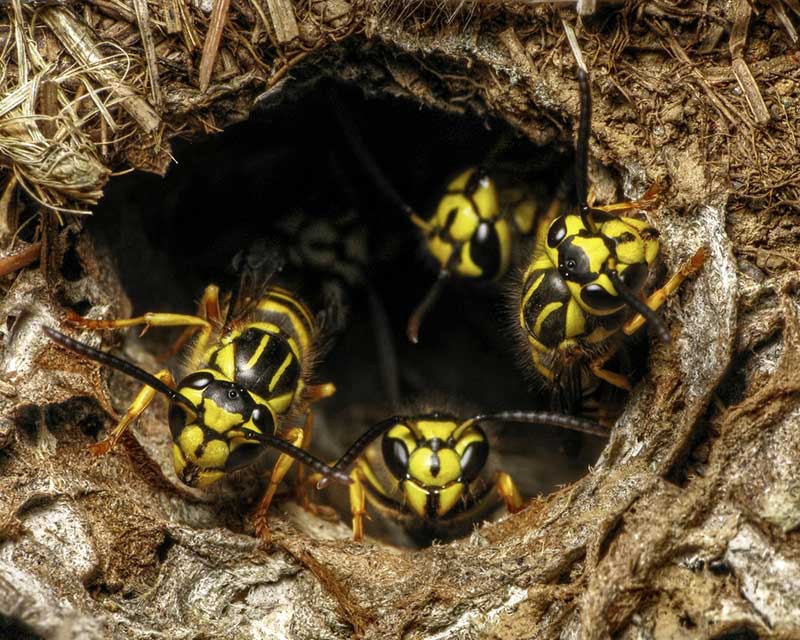
Destroying the Nest
The quickest and easiest route to destroying visible nests in eaves or under decks is with a spray insecticide labeled to kill wasps or yellow jackets. Choose one with a sprayer with a reach of at least 20 feet. Spray the nest in the evening when the yellow jackets are least active. Soak the nest with the solution following the instructions on the product container. Use caution when spraying the nest as angry wasps swarm quickly and can travel the distance from the nest to you in an instant. Spraying the nest typically kills off the entire nest of yellow jackets within hours.
Dusting with Insecticide
For ground-dwelling yellow jackets, Michigan State University (MSU) recommends dusting the entrance to the nest with an insecticide. Yellow jackets entering the nest pick up the insecticide on their bodies and carry it into the nest where it kills off the colony. This may take several days. MSU further warns that although the garden pesticide Sevin can be used to dust ground nests in or around the garden, it is not labeled safe for entrances to voids in your home. If you choose to dust nest entrances that lead to inside voids in your home, Ortho-Chlor Ant Killer Dust is the only product available that is considered safe.
Traps
Commercial traps for yellow jackets can be purchased in hardware stores and gardening centers and are effective for keeping yellow jackets away from family areas such as the deck or other seating or picnicking areas. But traps won’t likely make a big impact on the yellow jacket population as one nest can host hundreds or thousands of yellow jackets by the end of the summer. If your goal is simply to dine or entertain in peace without worries about yellow jackets, traps may be the best solution for you.
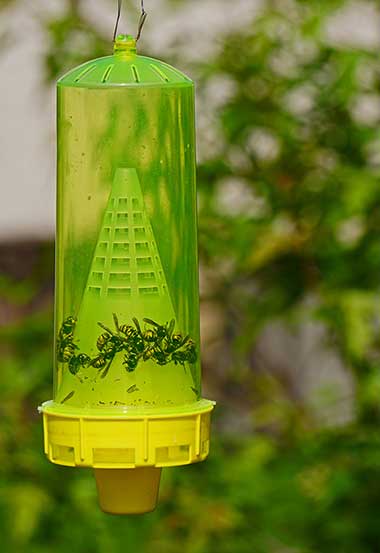
Homemade Traps
Sweet and Simple
- You can make a simple homemade trap to keep nuisance yellow jackets away from the deck and garden with a two-liter bottle and some simple household ingredients. Dissolve ¼ cup of sugar in a cup or two of water. Add 1 cup of apple cider vinegar and a chopped-up banana peel and mix well. Pour the mixture into the two-liter bottle and fill to halfway with water. Cut a small hole approximately ½ inch by 1 inch in the bottle near the top. Place the traps around the perimeter of dining or seating areas. Yellow jackets are attracted to both the sweet mixture and the odor of ripe fruit. After dining, tired yellow jackets will fall into the water and drown.
Stinky Does It
- The Clemson University Cooperative Extension offers plans for a trap of a different kind. This homemade trap features dead fish or liver for bait to attract foraging yellow jackets. Fill a bowl with water and add a few teaspoons of dish detergent. Suspend a dead fish or a piece of liver over the bowl by making a twig or dowel teepee and suspending a string from the center. When the yellow jackets feast on the fish or meat they will often become exhausted and drop into the bowl of water. The detergent in the water breaks the surface tension, so the yellow jacket will fall beneath the surface and drown.
Other Control Measures
Sometimes all that is needed to keep yellow jackets from posing a threat to family members is a little house cleaning.
- Keep your deck and outdoor dining areas free of food and beverages.
- Teach children to dispose of food and drink containers in the trash.
- Keep trash cans tightly closed and make sure the area around the cans is free of any bits of debris from cookouts and picnics.
- Keep returnables from soda or juice containers in a sealed bag as yellow jackets are attracted to the sweet leftovers in the bottom of the can.





